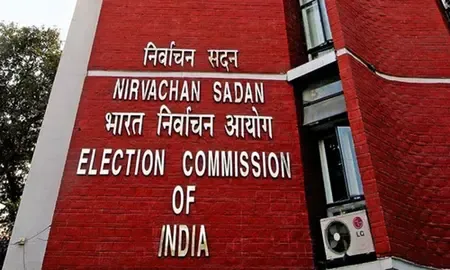What Is Driving Gilgit-Baltistan's Resistance Against Pakistan's Land Grabs?

Synopsis
Key Takeaways
- Gilgit-Baltistan is witnessing a surge in anti-government protests.
- The Land Reforms Act 2025 is viewed as a mechanism for state exploitation.
- Local grievances stem from decades of neglect and forced land alterations.
- The region's strategic significance has led to increased external intervention.
- Resistance against oppression continues despite government crackdowns.
New Delhi: While Pakistan may have entered a tenuous ceasefire with India in May, its troubles are far from resolved. For over a month, the Gilgit-Baltistan (GB) region, a part of Pakistan-occupied Kashmir (PoK), has been engulfed in civil disturbances and intense confrontations between the populace and the authorities. Unsurprisingly, similar to the hostilities with India that followed the horrific Pahalgam terrorist attack in April, this turmoil is a consequence of Pakistan's own actions.
The rising protests in Gilgit-Baltistan are fueled by the contentious Land Reforms Act 2025, which was enacted by the GB Assembly on May 21 amid an opposition walkout and significant civil society resistance.
The Act, which the government touts as a significant advancement in regional land governance and justice, claims to dismantle the Nautore Rules 1978, which categorized all land as either privately owned or state land under Khalsa Sarkar. Thus, superficially, the Act seems to promise the return of land to the people by declaring them as the common owners of all wastelands, forests, pastures, mountains, rivers, and glaciers, adhering to indigenous customs and ancestral rights. However, this rhetoric obscures a complex mechanism that grants the state, via bureaucracy, the authority to dictate land distribution, raising alarms among the populace about potential land seizures, resource exploitation, and heightened military-federal oversight.
For context, the Act introduces a tripartite classification of 'common impartible land', 'common partible land', and 'government land', and mandates the establishment of District Land Apportionment Boards (DLABs), led by the Deputy Commissioner, to categorize the land. Following this, the DLABs are required to present their plans and recommendations to the Gilgit Baltistan Land Appropriation Board (GBLAB), where the Chief Minister will make the final decisions.
The opposition has pointed out the restricted role for people's representatives in this framework and the excessive control granted to the bureaucratic-federal apparatus, as well as the dubious deployment of the ambiguous 'government land'. This classification fails to differentiate between disputed and legitimate government property, and the Kafkaesque dispute resolution process outlined in the Act is blatantly skewed in favor of the bureaucracy.
Furthermore, two of the most contentious aspects of the Act are the allocation of 10 percent of common lands to the state for 'developmental activities' and the 15-day eviction notice for 'unlawful occupants'. Naturally, this latter provision raises severe concerns among locals who have resided in the region for decades but may lack the necessary documentation to substantiate their claims, thereby risking their displacement.
In addition, the Pakistani state's appropriation of GB's land and resources for economic and strategic advantages at the expense of its people has been a long-standing grievance. Over the years, the state has even opened up GB's land for purchase by individuals from other regions, systematically altering the indigenous demographics.
For Pakistan, the strategic significance of Gilgit Baltistan, which borders China's Xinjiang province, Afghanistan's Wakhan Corridor, and India's Jammu and Kashmir, makes it an invaluable asset.
The region is crucial for the China-Pakistan Economic Corridor (CPEC), as all routes linking China to Pakistan, including the Karakoram Highway, traverse it. This has led to an increased Chinese infrastructural and military presence in recent years, which has become another major point of contention among the people in GB.
Earlier this month, demonstrators protesting against Pakistan's exploitative trade policies blocked the Karakoram Highway for several days, resulting in a significant halt of activities.
Critics of the Act have also labeled it as part of Pakistan's ambitious Green Pakistan Initiative (GPI), a large-scale agricultural reform strategy, under which the Army and private entities are seeking to acquire GB's land for extensive farming. This is the same initiative under which the controversial Indus canals were proposed, inciting widespread unrest and opposition from the people of Sindh. Activists also emphasize that since the increased integration of Jammu and Kashmir into India following the abrogation of Article 370 in 2019, the Pakistani government has intensified its coercive grip over Pak-occupied Kashmir (PoK).
In response to the widespread protests, the Pakistani government not only forcibly enacted the Act but also violently suppressed the demonstrators, arresting some under stringent anti-terrorism laws. Despite the state's brutal crackdown, the residents of GB continue to chant 'kabze par kabza namanzoor' (we reject repeated occupations), standing firm against Pakistan's oppression and exploitation.
As the mountains of GB reverberate with cries of resistance, the people are not just opposing a law, but decades of dispossession, neglect, and occupation.










